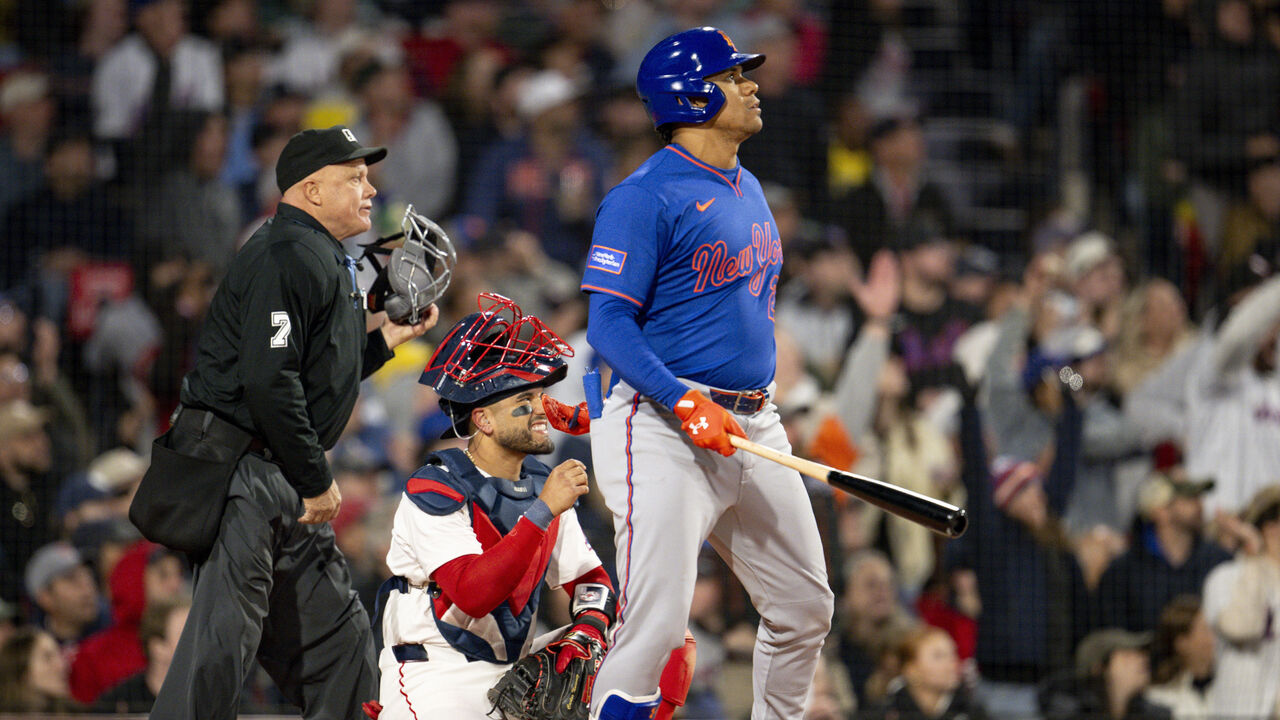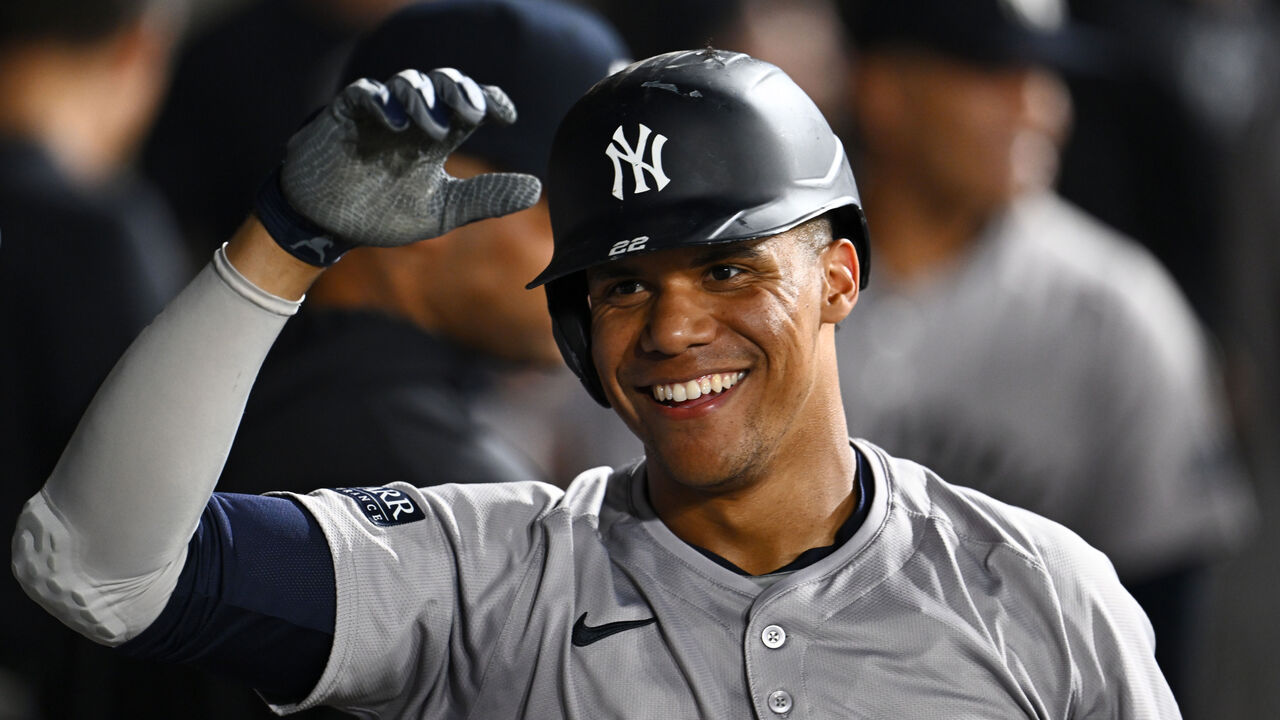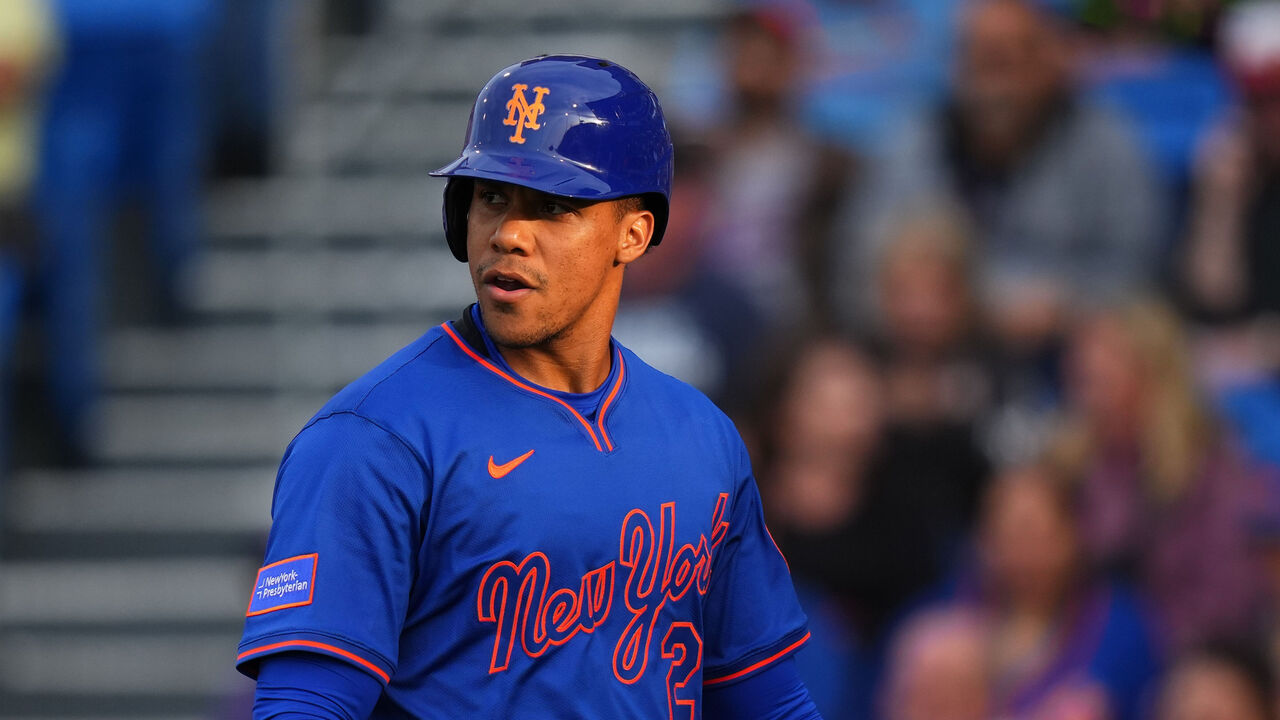Soto's hustle is missing, and the honeymoon is over
There is a case to be made that a player should not always hustle.
This can be argued especially for a star player.
The logic is this: If a player believes he's hit into a routine ground out in a low-leverage game situation, it's not worth the risk of pulling a hamstring. It's a game of probability. Why risk it?
Not everyone will agree, of course, but some will make the case. Some teams will even demand hustle of oft-injured players.
Then there is what should be mandatory hustle, what one would hope is automated behavior at the professional level.
For instance, if a hitter holds any doubt about the status of his fly ball's trajectory he should be running, not admiring the ball's flight, as Juan Soto did Tuesday night in Boston. Rather than disappearing over the well, Soto's batted ball hit halfway up the Green Monster.
Soto should have advanced to second with a double. Instead, he sheepishly reached first base. The New York Post's sports front the following morning included the headline: "Juan Slo-Mo."
The honeymoon is over.

While Soto followed by stealing second base, he ought to have been there to begin with. He seemed to be atoning for his lack-of-hustling sin.
Mets manager Carlos Mendoza said afterward, "He thought he had it. In this ballpark, with that wall right there, you gotta get out of the box. We'll discuss that."
That a discussion is needed at all is troubling.
It would be one thing if it were an isolated incident, but the head-scratching moments are piling up.
Soto's lack of hustle followed an episode in the Mets' Sunday game in which he failed to run out a ground ball in the eighth inning with the score tied.
The batted ball was not routine. Yankees second baseman DJ LeMahieu had to range far to his right and drop to his knees to retrieve the ball. He threw from his knees to complete the play, thinking he had to hurry. He had plenty of time.
LeMahieu got the ball to 1B in 4.26 seconds on my clock. Soto got to 1B in 4.75 seconds. MLB average for LHH from home to 1B is 4.35. Bad look for a $61.8 million dollar “player”.
— John Peabody (@PeabodyHitDev) May 19, 2025
pic.twitter.com/3aFeK3R1YA
ESPN play-by-play man Karl Ravech on the call: "Everything about it in slow motion."
It was another mandatory hustle moment Soto ignored.
"I think I've been hustling pretty hard. If you see it today, you could tell," Soto said when asked postgame about his effort.
Unfortunately for the merits of Soto's claim, there are witnesses. Everyone watching - including his Mets teammates - knows what hustle looks like.
No hustle. No accountability. No aura.
It is curious behavior from a player one would expect to be putting his best public face forward after signing a record 15-year, $765-million deal. That's more than double the guaranteed dollars in Aaron Judge's deal.
The drama also comes at a time when Soto is not playing up to his usual standards to begin the season, and at a time when some feel Soto could be battling some buyer's remorse.
Yankees play-by-play voice Michael Kay said on his radio show:
"Why isn't he happy? It comes down to this. I'll say it now, and it will be denied. Of course, it has to be denied. But I have talked to people that I respect. He wanted to return to the Yankees. That was his preference. His family said, 'You are going to the Mets.'"
For that reason or another, Soto appears to be sulking.

The most troubling visual for immediate on-field production is that the "Soto Shuffle" is often missing. That seems to be an indicator of reduced confidence, lost aura.
Perhaps some of this is new-kid-in-town syndrome.
Players often face an adjustment period when moving to new teams, and star free agents can feel pressure to live up to their contracts. Some in the media are already talking about his contract being a huge mistake.
Is this investment a disaster for the Mets? In the short term, I do not believe so.
I suspect Soto's bat will warm, he will start feeling more confident, more comfortable, and he will get back to being Soto. The "Soto Shuffle" will return more frequently this summer and fall. Most will forget about these episodes.
But the Mets might have a long-term problem on their hands.
It's possible Soto's massive payday has reduced his passion and intrinsic motivation.
We also do not know much about how Soto handles failure or criticism. He's never dealt with much of either on the baseball field.
If Soto's recent attitude is a window into how he will handle the eventual decline that catches up with all aging players, or other adversity, then the back half of his contract could get ugly.
No club wants to be staring down an Anthony Rendon comp, a situation where a huge contract becomes a major albatross as poor performance (and injury) combines with a loss of passion for the craft. Issues then snowball.

Soto is at his physical peak now. Most of the deal will be played in his 30s. Avoiding a Rendon-like situation is a major reason why due diligence is required into understanding the complete physical and mental makeup of a player when dishing out such a lucrative contract.
This recent stretch will be forgotten with better play in the near term, but it's a troubling sign for a player tied to a historic financial commitment.
For Soto, it might be time to start running out everything he puts into play.
Travis Sawchik is theScore's senior baseball writer.